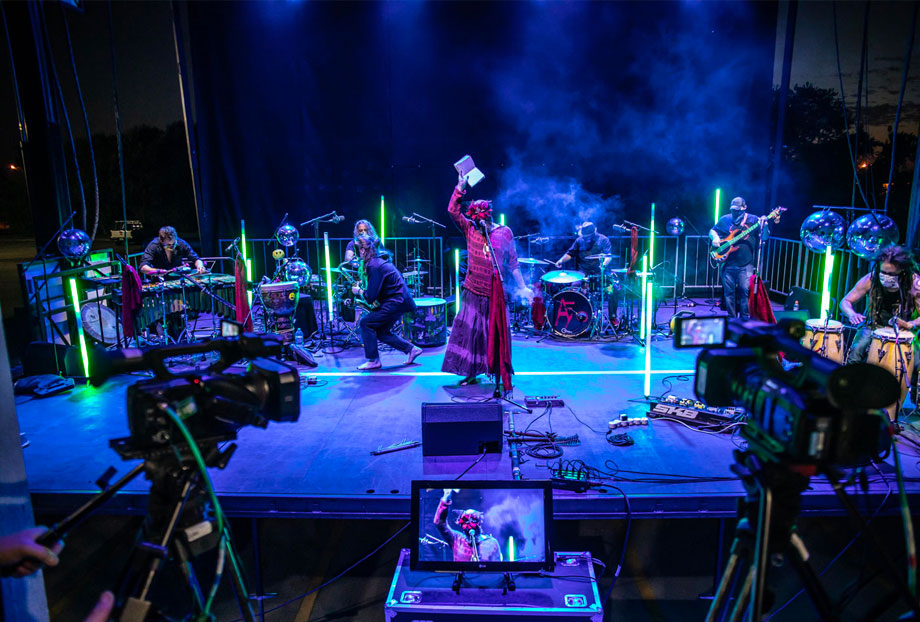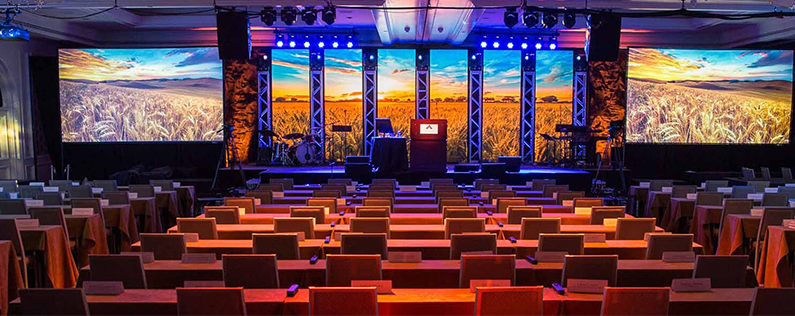Comprehending the Process of Live Event Audio Visual Production
The complexities of real-time event audio aesthetic production need a blend of technical experience and strategic preparation. Each phase, from the preliminary idea to the last implementation, needs a collective effort amongst different specialists, consisting of audio engineers and lights designers. Comprehending the duties and duties within this ecological community is essential for accomplishing a seamless experience. As we discover the crucial elements that add to a successful event, it ends up being apparent that the structure hinges on both preparation and adaptability. What happens when unanticipated difficulties develop, and just how do they reshape the manufacturing landscape?
The Importance of Preparation
Reliable preparation is crucial for the success of any type of online event audio aesthetic production. A well-structured strategy acts as the structure, directing every aspect of the occasion from conception to execution. This process starts with defining the event's objectives, comprehending the target audience, and establishing the desired end results. Developing clear objectives makes sure that all staff member are lined up and can function towards an usual purpose.
Additionally, thorough scheduling is important. A thorough timeline that consists of due dates for each and every stage of production assists to reduce potential dangers and guarantees that all parts are resolved in a timely fashion. Furthermore, effective resource allotment is vital; this consists of not just the human sources however likewise the spending plan, place, and products needed for the event.
Ultimately, complete planning not just boosts the top quality of the audio visual experience but likewise instills self-confidence among the team and stakeholders, leading to a effective and smooth occasion. Without this foundation, also the most ingenious ideas can fail, underscoring the obvious relevance of planning in real-time occasion audio visual manufacturing.

Key Tools and Technology
An effective real-time occasion sound visual production relies heavily on the ideal tools and modern technology to bring the vision to life. Vital parts include audio systems, visual display screens, lighting, and control systems, each playing a crucial function in making certain a smooth experience.
Sound systems are composed of microphones, audio speakers, and mixers that help with clear noise delivery. High-quality microphones capture vocals and tools accurately, while mixers enable real-time sound changes based on the event's characteristics. Visual displays, consisting of projectors and LED screens, are critical for conveying information and improving audience interaction. The option of display technology can considerably affect the general visual and performance of the presentation.
Illumination equipment is an additional crucial aspect, as it establishes the mood and highlights essential minutes during the event. Choices range from stage lights to intelligent lights systems that can be set for certain results. Control systems incorporate sound, aesthetic, and lights elements, guaranteeing cohesive procedure throughout the production.
Buying trusted tools and understanding the newest technological improvements can significantly enhance the high quality and effect of live event sound aesthetic productions, ultimately adding to a memorable target market experience. Live Event Audio Visual Production.
Roles and Obligations
Successful live event audio visual production needs a distinct structure of duties and duties amongst staff member. Each duty is important to make certain smooth procedures and accomplish the preferred outcome.
The audio designer is accountable for managing sound quality, including microphone positioning, sound blending, and ensuring that all audio components are integrated with aesthetic content. The lighting developer develops a setting that boosts the event's state of mind, choosing suitable fixtures and programs lights hints to enhance the performance or presentation.
A video technician supervises all aesthetic components, including camera operation, video clip changing, and estimate monitoring. They function closely with the director, that works with the total production, making real-time decisions to make sure that the event moves flawlessly.
Manufacturers manage budgeting and scheduling, making certain that all aspects of the event line up with the customer's vision. This collaborative framework allows an effective audio aesthetic production, view lining up each member's know-how in the direction of a linked objective.
Execution and Live Production
Carrying out a real-time like this event needs thorough planning and real-time versatility to make certain all components come together flawlessly. Each team needs to be straightened with the event's vision while keeping clear interaction to attend to any kind of unforeseen challenges that occur during the event.

The production group must stay cautious, adapting to audience responses and feedback. Inevitably, effective implementation finishes in a cohesive online event that mesmerizes the target market and fulfills the customer's goals.
Post-Event Examination and Comments
Complying with the final thought of a live event, carrying out a complete post-event analysis is crucial for determining toughness and locations for enhancement. This examination procedure must involve gathering comments from various stakeholders, consisting of participants, view website event team, and customers (Live Event Audio Visual Production). By using studies, meetings, and casual discussions, coordinators can gain valuable understandings right into the overall experience and efficiency of the audiovisual manufacturing
Analyzing technological elements such as audio top quality, visual clarity, and tools reliability is critical. In addition, examining the control between the production group and various other departments assists to pinpoint logistical obstacles and successes. Determining any kind of concerns experienced throughout the event makes it possible for teams to develop techniques for mitigating similar troubles in future productions.
Additionally, reviewing and compiling comments assists in the recognition of standout aspects, such as smooth shifts or engaging presentations, which can be highlighted in future occasions. The post-event assessment not just gives a roadmap for improvement but likewise cultivates a culture of constant learning within the group. Ultimately, this reflective technique improves the quality of future online events, making certain that they meet or surpass audience expectations and provide an unforgettable experience.
Final Thought
In final thought, effective real-time event audio visual manufacturing necessitates comprehensive preparation, experienced coordination among diverse roles, and the integration of advanced modern technology. Ultimately, a well-executed sound aesthetic technique considerably boosts audience interaction and contributes to the total success of online occasions.
The ins and outs of live event audio visual manufacturing need a blend of technological competence and critical planning.Reliable preparation is important for the success of any type of online occasion audio visual manufacturing. Without this foundation, also the most cutting-edge ideas can falter, highlighting the indisputable importance of preparation in online occasion audio aesthetic production.
Each group has to be lined up with the event's vision while maintaining clear interaction to attend to any type of unanticipated obstacles that occur throughout the event.
In conclusion, effective online event audio aesthetic production requires extensive planning, knowledgeable control among diverse duties, and the integration of sophisticated innovation.